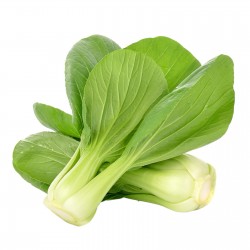Menu
-
MenuНазад
- Home
-
Категорії
-
-
Категорії
-
Насіння овочів
-
Сорти за країнами
- Сорти з Вірменії
- Сорти з БіГ
- Сорти з Хорватії
- Сорти з Франції
- Varieties from Germany
- Varieties from Greece
- Varieties from Hungary
- Сорти з Індії
- Varieties from Italy
- Сорти з Японії
- Сорти з Північної Македонії
- Varieties from Peru
- Varieties from Russia
- Varieties from Serbia
- Сорти зі Словенії
- Varieties from Spain
- Varieties from Thailand
- Сорти з Туреччини
- Varieties from USA
- Насіння томатів
- Насіння кукурудзи
- Сімейство гарбузових
- Родина бобових
- Насіння огірків
- Насіння болгарського перцю
- Сім'я морквяних
- Родина цибулевих
- Насіння салату
- Родина картопляних
- Сімейство капустяних
- Насіння редьки
- Родина бурякових
- Насіння кавуна
- Насіння дині
- Насіння цвітної капусти
- Родина соняшникових
-
Сорти за країнами
- Насіння фруктів
- Насіння перцю чилі
- Насіння лікарських трав
- Насіння рослин лазіння
- Дерева - Чагарник - Насіння
- Пальмове насіння
- Насіння декоративних трав
- Насіння тютюну
-
Насіння овочів
-
-
-
-
- НОВІ ПРОДУКТИ
- Доставка - Оплата
- Створити рахунок
- FAQ
- На Головну
-
- Великі пакети насіння
- Насіння гігантських рослин
- Насіння овочів
- Сорти за країнами
- Сорти з Вірменії
- Сорти з БіГ
- Сорти з Хорватії
- Сорти з Франції
- Varieties from Germany
- Varieties from Greece
- Varieties from Hungary
- Сорти з Індії
- Varieties from Italy
- Сорти з Японії
- Сорти з Північної Македонії
- Varieties from Peru
- Varieties from Russia
- Varieties from Serbia
- Сорти зі Словенії
- Varieties from Spain
- Varieties from Thailand
- Сорти з Туреччини
- Varieties from USA
- Насіння томатів
- Насіння кукурудзи
- Сімейство гарбузових
- Родина бобових
- Насіння огірків
- Насіння болгарського перцю
- Сім'я морквяних
- Родина цибулевих
- Насіння салату
- Родина картопляних
- Сімейство капустяних
- Насіння редьки
- Родина бурякових
- Насіння кавуна
- Насіння дині
- Насіння цвітної капусти
- Родина соняшникових
- Сорти за країнами
- Насіння фруктів
- Насіння перцю чилі
- Насіння лікарських трав
- Насіння рослин лазіння
- Дерева - Чагарник - Насіння
- Бананове насіння
- Пальмове насіння
- Насіння декоративних трав
- Насіння тютюну
- Насіння квітів
- Насіння кактусів
- Поливати насіння рослин
- Інструкція з посіву
- Форми для овочів та фруктів
- Грибний міцелій
- Висадити бульби
- Насіння бамбука
- Аюрведичні рослини
- Гібридне насіння F1
- Упаковка та інше
- Холодостійкі рослини
- Догляд за рослинами
- Органічні спеції
- Доставка - Оплата
- Немає PayPal та оплати карткою X
Last Product Reviews
Out of the two seeds, one germinated and the other one was dead and floatin...
By
 Riikka H on 07/03/2024
Riikka H on 07/03/2024
Verified Purchase
Лідери продажів
Знайдено товарів: 1316.
Показати 376-390 з 1316 товарів

Сорт із Сербії
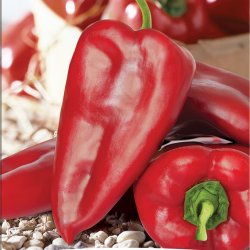
Насіння великого солодкого...
Ціна
1,75 €
(SKU: PP 61)
Seeds Gallery EU,
5/
5
<h2><strong>Насіння великого солодкого перцю Supernova</strong></h2>
<h2><span style="color: #ff0000;"><strong>Ціна за упаковку 50 насінин.</strong></span></h2>
<p>Перець Supernova має великі плоди, які під час дозрівання змінюються із зеленого на червоний. Плоди великі, масою до 300 грам, дуже солодкі.</p>
<p>Цей сорт добре зарекомендував себе як для випічки, так і для зимового зберігання. Підходить для заморожування та подальшого використання.</p>
<p>Що стосується самого вирощування, то воно показало, що воно вдається і у відкритому грунті, і в теплиці.</p>
<p>Рослина міцна і стійка до багатьох хвороб, які вражають перець.</p>
PP 61 (50 S)


Сорт з Росії
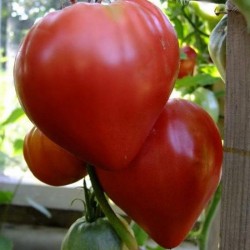
Орлине серце насіння...
Ціна
1,65 €
(SKU: VT 80)
Seeds Gallery EU,
5/
5
<h2><strong>Орлине серце насіння сибірських томатів</strong></h2>
<h2><span style="color: #f80000;"><strong>Ціна за упаковку з 10 насінин.</strong></span></h2>
Орлине серце Сибірський томат - це вольєве серце унікального кольору, яке варто побачити.<br>Середній сезон, високоврожайний, великоплідний сорт аматорської селекції. 300 г томатних плодів красивої витягнутої форми у формі серця, рожево-малинового кольору з ніжною солодкою м’якоттю. Це дуже м’ясний і гладкий помідор, який є солодким і смачним.<br><br>Щільний, не водянистий, стійкий до розтріскування. Рослина потужна, дуже стійка до хвороб та несприятливих погодних умов. Він підходить для відкритих полів і теплиць.<br>80 днів.<script src="//cdn.public.n1ed.com/G3OMDFLT/widgets.js"></script>
VT 80 (10)


Гігантська рослина (з гігантськими плодами)
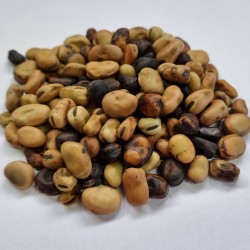
Солодкий Lorane насіння...
Ціна
1,45 €
(SKU: VE 161 (10g))
Seeds Gallery EU,
5/
5
<h2><strong>Солодкий Lorane насіння Фава (Fava)</strong></h2>
<h2><span style="color: #ff0000;"><strong>Ціна за упаковку 15-20 (10г) насіння.</strong></span></h2>
Дрібні насіннєві фави зазвичай висаджують для покриття статусу врожаю, але солодкий Лоран був обраний з гарним солодкуватим смаком, тому він є чудовим вибором для культури подвійного призначення, щоб годувати грунт і садівника.<br><br>Смак чудовий і особливо смачний у фава-хумусі. Зазвичай висівають восени для покривного врожаю та для отримання більш високих урожаїв, фавас також може бути посіяний навесні. Надзвичайно зимостійкий - ми бачили, як цей сорт збирається через зимові температури 0 ° F із лише декількома дюймами снігу для захисту.<br><br>Коли вирощується як суха квасоля, солодкий лоран менш схильний до розщеплення під час збирання та обробки, ніж більші насінні типи.<script src="//cdn.public.n1ed.com/G3OMDFLT/widgets.js"></script>
VE 161 (10g)


Рослина стійка до холодів і морозів
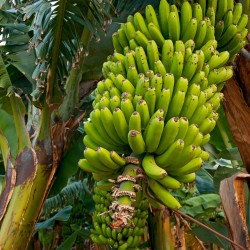
Насіння дикого лісу банана...
Ціна
3,05 €
(SKU: V 125 MY)
Seeds Gallery EU,
5/
5
<h2><strong>Насіння дикого лісу банана (Musa yunnanensis)</strong></h2>
<h2><span style="color: #ff0000;"><strong>Ціна за упаковку з 3 насінин.</strong></span></h2>
<p class=""><strong>Новий вид, стійкий до холоду та морозу, з гір південно-західного Китаю.</strong><br>Musa yunnanensis, відомий як банан Юньнань або дикий лісовий банан, - нещодавно описана рослина з сімейства бананових і подорожникових, яка проживає в Юньнані на півдні Китаю. Зразок був зібраний у 2005 році в Сішуанбанна (автономна префектура на кордоні з Індокитаєм) на висоті 1150 метрів.<br><br>Росте дуже швидко, з тонкими псевдостеблами і блакитними стеблами. Історія цього виду в садівничій культурі коротка, але досить заплутана. Спочатку він був представлений як Ensete wilsonii, оскільки був помилково ідентифікований. Пізніше він був замінений на Musa itinerans, але потім виявився новим видом, який Марку Хаккінен офіційно описав у 2007 році як Musa yunnanensis.<br><br>Хоча M. yunnanesis росте в гірському тропічному лісі, він також стійкий до морозів і чутливий до прямих сонячних променів. Зазвичай вона досягає у висоту близько 5 метрів. Кора на полінах покрита білим воском із синюватим відтінком. Верх листя також синюшний, хоча їх нижня сторона червона.<br><br>Musa yunnanensis має цінність для місцевої дикої природи, а плоди споживають птахи, кажани та слони. </p>
V 125 MY


Сорт з Боснії та Герцеговини

Рослина стійка до холодів і морозів
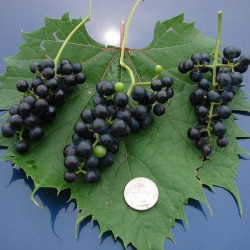
Насіння дикого винограду...
Ціна
1,55 €
(SKU: V 131 WG)
Seeds Gallery EU,
5/
5
<meta http-equiv="Content-Type" content="text/html; charset=UTF-8" />
<h2><strong>Насіння дикого винограду (Vitis spp.)</strong></h2>
<h2><span style="color: #ff0000;"><strong>Ціна за упаковку 10 насінин.</strong></span></h2>
<p>Дикий виноград (Vitis spp.) був знайдений європейськими поселенцями, коли вони прибули на східне узбережжя нинішніх Сполучених Штатів. Звикли до одомашненого винограду (Vitis vinifera), родом з Європи, розгул лози та плодів дикого винограду спонукали поціновувачів винограду гібридизувати різні види для отримання більших, солодших плодів для вина, соку та желе. У той час як кілька місцевих диких сортів винограду були культивовані, більшість одомашнених сортів винограду є сортами Vinifera.</p>
<p>Основними відмінностями між диким і культурним виноградом є розмір і солодкість плодів, стійкість до шкідників і хвороб, а також розмноження. Загалом, дикий виноград, як правило, має менші плоди, ніж домашній виноград.</p>
<p>Вони легко ростуть і набагато менше схильні до хвороб і шкідників, ніж культивовані сорти винограду, що робить їх досить плідними. Ще одна причина, по якій їх можна віднести до дикорослих виноградних бур’янів.</p>
<p>Дикий виноград дає плоди діаметром від 1/8 до 1 дюйма. Хоча фрукти їстівні, вони варіюються від кислих до солодких (насіння дикого винограду, яке ми пропонуємо, є дуже солодким).</p>
<p>Чи їстівний дикий виноград?<br />Так, дикий виноград їстівний</p>
<p>Дикий виноград чудово підходить для готування соку, і він дуже добре заморожується, якщо у вас немає часу або бажання негайно випустити сік. З соку виходить чудове желе. З них можна готувати страви, а листя теж їстівні. Відоме як «долма», листя здавна використовували в середземноморській кухні, фарширували рисом, м’ясом та різними спеціями.</p>
V 131 WG 10 S


Гігантська рослина (з гігантськими плодами)

Сорт з Боснії та Герцеговини

Рослина стійка до холодів і морозів
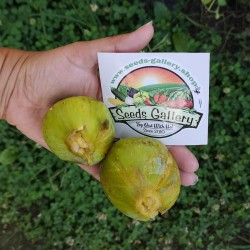
Giant White fig seeds from...
Ціна
1,95 €
(SKU: V 19 GWF)
Seeds Gallery EU,
5/
5
<h2><strong>Giant White fig seeds from Dalmatia</strong></h2><h2><span style="color: #ff0000;" data-mce-style="color: #ff0000;"><strong>Price for Package of 20 seeds.</strong></span></h2><p>We personally picked and brought this fig from Herzegovina for the first time on August 10.08.2020. As you can see from our pictures, fruits are huge and have an average weight of 100 - 130 grams.</p><p>The white fig is an old Italian variety known as Fico ottato (dottato). It has lush growth and a high pyramidal crown. The white fig is a variety of very high yields.</p><p>The white fig is two-leaved, it is a very old variety of fig. The fruit is very large. The flesh is sweet and the color of the fruit is yellow-green. It is a lush tree, bears abundant fruit, and blooms twice.</p><p>The white fig ripens in late July and early September, and the ripening period is short (one month).</p><p>Spring bloom from degenerated female flowers, fleshy and grows to normal size, but never edible. The summer inflorescence develops an edible fruit, elongated by a short neck, and can reach a weight of over 150 g.</p><p>The fruits are of good quality, suitable for transport and consumption in fresh condition and drying. The flesh is light white under the skin and pale honey on the inside, very juicy, pleasantly sweet.</p><p>White fig very widespread in the Neretva valley in southern and central Dalmatia.</p><p>The fruits have great dietary and nutritional value, and medicinal for stomach diseases, anemia, etc.</p><p>White fig is consumed fresh, dry, like jam, sweet, compote, jelly, and juice.</p><p>Due to its nutritional composition and medicinal properties, the fig tree rises above many types of fruit. We all already know that it is proven to erase wrinkles and rejuvenate, and we also know that the fig or fig leaf used to be the first clothing a long time ago.</p><p>Fig fruits are very nutritious and of high dietary therapeutic value. They are especially in demand in the fresh state during the tourist season, but also processed differently during the year, mostly as dried fruits (dried figs).</p>
V 19 GWF (20 S)


Сорт із Сербії

Рослина стійка до холодів і морозів
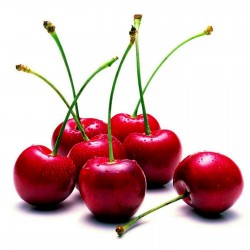
Serbian sweet dwarf Morello...
Ціна
1,95 €
(SKU: V 216)
Seeds Gallery EU,
5/
5
<h2><strong>Serbian morello cherry seeds (Prunus cerasus)</strong></h2>
<h2 class=""><span style="color: #ff0000;"><strong>Price for Package of 10 (2,5g) seeds.</strong></span></h2>
<p>This cherry variety originally comes from Serbia and is over 120 years old. The fruits are extremely large (almost as big as cherries), dark-red in color, and very sweet. The tree reaches a height of approx. 4 meters and a diameter of approx. 2 to 3 meters. The variety is extremely fertile and can deliver over 50 kilograms of cherries in season.</p>
<p>This variety withstood temperatures of - 30 degrees Celsius. However, it is believed that it can easily withstand -40 an more degrees Celsius. It is resistant to diseases and there is no need to use chemical preparations.</p>
<h3><strong>You can read more about cherries on Wikipedia:</strong></h3>
<p><i><b>Prunus cerasus</b></i><span> </span>(<b>sour<span> </span>cherry</b>,<sup id="cite_ref-3" class="reference">[3]</sup><span> </span><b>tart cherry</b>, or<span> </span><b>dwarf cherry</b><sup id="cite_ref-BSBI07_4-0" class="reference">[4]</sup>) is a species of<span> </span><i>Prunus</i><span> </span>in the subgenus<span> </span><i>Cerasus</i><span> </span>(cherries), native to much of<span> </span>Europe<span> </span>and southwest<span> </span>Asia. It is closely related to the sweet cherry (<i>Prunus avium</i>), but has a<span> </span>fruit<span> </span>that is more<span> </span>acidic. Its sour pulp is edible.<sup id="cite_ref-5" class="reference">[5]</sup></p>
<p>The tree is smaller than the sweet cherry (growing to a height of 4–10 m), has twiggy branches, and its crimson-to-near-black cherries are borne upon shorter stalks.<sup class="noprint Inline-Template Template-Fact">[<i><span title="This claim needs references to reliable sources. (December 2013)">citation needed</span></i>]</sup><span> </span>There are two main varieties (groups of<span> </span>cultivars) of the<span> </span><b>sour cherry</b>: the dark-red<span> </span><b>morello cherry</b><span> </span>and the lighter-red<span> </span><b>amarelle cherry</b>.</p>
<h2><span class="mw-headline" id="Origins_and_cultivation">Origins and cultivation</span></h2>
<div class="thumb tright">
<div class="thumbinner"><img alt="Serbian morello cherry seeds (Prunus cerasus)" src="https://upload.wikimedia.org/wikipedia/commons/thumb/e/e4/Illustration_Prunus_cerasus0.jpg/220px-Illustration_Prunus_cerasus0.jpg" decoding="async" width="220" height="359" class="thumbimage" srcset="//upload.wikimedia.org/wikipedia/commons/thumb/e/e4/Illustration_Prunus_cerasus0.jpg/330px-Illustration_Prunus_cerasus0.jpg 1.5x, //upload.wikimedia.org/wikipedia/commons/thumb/e/e4/Illustration_Prunus_cerasus0.jpg/440px-Illustration_Prunus_cerasus0.jpg 2x" data-file-width="1462" data-file-height="2388" title="Serbian morello cherry seeds (Prunus cerasus)" />
<div class="thumbcaption">
<div class="magnify"></div>
Illustration of Morello Cherry</div>
</div>
</div>
<p><i>Prunus cerasus</i>, a<span> </span>tetraploid<span> </span>with 2n=32 chromosomes, is thought to have originated as a natural hybrid between<span> </span><i>Prunus avium</i><span> </span>and<span> </span><i>Prunus fruticosa</i><span> </span>in the<span> </span>Iranian Plateau<span> </span>or Eastern Europe where the two species come into contact.<span> </span><i>Prunus fruticosa</i><span> </span>is believed to have provided its smaller size and sour tasting fruit. The hybrids then stabilised and interbred to form a new, distinct species.<sup id="cite_ref-7" class="reference">[7]</sup></p>
<p>Cultivated sour cherries were selected from wild specimens of<span> </span><i>Prunus cerasus</i><span> </span>and the doubtfully distinct<span> </span><i>P. acida</i><span> </span>from around the<span> </span>Caspian<span> </span>and<span> </span>Black Seas, and were known to the<span> </span>Greeks<span> </span>in 300 BC. They were also extremely popular with<span> </span>Persians<span> </span>and the<span> </span>Romans<span> </span>who introduced them into<span> </span>Britain<span> </span>long before the 1st century AD. The fruit remains popular in modern-day<span> </span>Iran.</p>
<p>In England, their cultivation was popularised in the 16th century in the time of<span> </span>Henry VIII. They became a popular crop amongst Kentish growers, and by 1640 over two dozen named<span> </span>cultivars<span> </span>were recorded. In the Americas, by 1704 the Vestry of<span> </span>New Kent County, Virginia<span> </span>recorded "The DePriest of Kent" planted 354 acres of Prunus cerasus along the<span> </span>Pamunkey River<span> </span>as the 'Kent' variety, that spawned other<span> </span>Virginia<span> </span>colonists throughout Richmond to plant sour cherry trees, 'Early Richmond' variety or 'Kentish Red', when they arrived.<sup id="cite_ref-8" class="reference">[8]</sup></p>
<div class="thumb tright">
<div class="thumbinner"><img alt="Serbian morello cherry seeds (Prunus cerasus)" src="https://upload.wikimedia.org/wikipedia/commons/thumb/5/57/Fr%C3%BChling_bl%C3%BChender_Kirschenbaum.jpg/220px-Fr%C3%BChling_bl%C3%BChender_Kirschenbaum.jpg" decoding="async" width="220" height="166" class="thumbimage" srcset="//upload.wikimedia.org/wikipedia/commons/thumb/5/57/Fr%C3%BChling_bl%C3%BChender_Kirschenbaum.jpg/330px-Fr%C3%BChling_bl%C3%BChender_Kirschenbaum.jpg 1.5x, //upload.wikimedia.org/wikipedia/commons/thumb/5/57/Fr%C3%BChling_bl%C3%BChender_Kirschenbaum.jpg/440px-Fr%C3%BChling_bl%C3%BChender_Kirschenbaum.jpg 2x" data-file-width="2272" data-file-height="1712" title="Serbian morello cherry seeds (Prunus cerasus)" />
<div class="thumbcaption">
<div class="magnify"></div>
A blooming sour cherry tree</div>
</div>
</div>
<p>Before the<span> </span>Second World War<span> </span>there were more than fifty cultivars of sour cherry in cultivation in England; today, however, few are grown commercially, and despite the continuation of named cultivars such as 'Kentish Red', 'Amarelles', 'Griottes' and 'Flemish', only the generic Morello is offered by most nurseries. This is a late-flowering variety, and thus misses more frosts than its sweet counterpart and is therefore a more reliable cropper. The Morello cherry ripens in mid to late summer, toward the end of August in southern England. It is self-fertile, and would be a good<span> </span>pollenizer<span> </span>for other varieties if it did not flower so late in the season.</p>
<div class="thumb tright">
<div class="thumbinner"><img alt="Serbian morello cherry seeds (Prunus cerasus)" src="https://upload.wikimedia.org/wikipedia/commons/thumb/b/bc/SourcherryYield.png/220px-SourcherryYield.png" decoding="async" width="220" height="132" class="thumbimage" srcset="//upload.wikimedia.org/wikipedia/commons/thumb/b/bc/SourcherryYield.png/330px-SourcherryYield.png 1.5x, //upload.wikimedia.org/wikipedia/commons/thumb/b/bc/SourcherryYield.png/440px-SourcherryYield.png 2x" data-file-width="1600" data-file-height="960" title="Serbian morello cherry seeds (Prunus cerasus)" />
<div class="thumbcaption">
<div class="magnify"></div>
Worldwide sour cherry production</div>
</div>
</div>
<p>Sour cherries require similar cultivation conditions to<span> </span>pears, that is, they prefer a rich, well-drained, moist<span> </span>soil, although they demand more<span> </span>nitrogen<span> </span>and<span> </span>water<span> </span>than sweet cherries. Trees will do badly if waterlogged, but have greater tolerance of poor drainage than sweet varieties. As with sweet cherries, Morellos are traditionally cultivated by budding onto strong growing rootstocks, which produce trees too large for most gardens, although newer dwarfing rootstocks such as<span> </span><i>Colt</i><span> </span>and<span> </span><i>Gisella</i><span> </span>are now available. During spring, flowers should be protected, and trees weeded, mulched and sprayed with natural seaweed solution. This is also the time when any required<span> </span>pruning<span> </span>should be carried out (note that cherries should not be pruned during the dormant winter months). Morello cherry trees fruit on younger wood than sweet varieties, and thus can be pruned harder. They are usually grown as standards, but can be fan trained, cropping well even on cold walls, or grown as low bushes.<sup id="cite_ref-9" class="reference">[9]</sup></p>
<div class="thumb tright">
<div class="thumbinner"><img alt="Serbian morello cherry seeds (Prunus cerasus)" src="https://upload.wikimedia.org/wikipedia/commons/thumb/9/9f/Ripe_sour_cherries_on_a_branch.jpg/220px-Ripe_sour_cherries_on_a_branch.jpg" decoding="async" width="220" height="161" class="thumbimage" srcset="//upload.wikimedia.org/wikipedia/commons/thumb/9/9f/Ripe_sour_cherries_on_a_branch.jpg/330px-Ripe_sour_cherries_on_a_branch.jpg 1.5x, //upload.wikimedia.org/wikipedia/commons/9/9f/Ripe_sour_cherries_on_a_branch.jpg 2x" data-file-width="430" data-file-height="314" title="Serbian morello cherry seeds (Prunus cerasus)" />
<div class="thumbcaption">
<div class="magnify"></div>
Ripe sour cherries (Somogy,<span> </span>Hungary)</div>
</div>
</div>
<div class="thumb tright">
<div class="thumbinner"><img alt="Serbian morello cherry seeds (Prunus cerasus)" src="https://upload.wikimedia.org/wikipedia/commons/thumb/9/94/Black_Che.jpg/220px-Black_Che.jpg" decoding="async" width="220" height="163" class="thumbimage" srcset="//upload.wikimedia.org/wikipedia/commons/thumb/9/94/Black_Che.jpg/330px-Black_Che.jpg 1.5x, //upload.wikimedia.org/wikipedia/commons/thumb/9/94/Black_Che.jpg/440px-Black_Che.jpg 2x" data-file-width="2944" data-file-height="2184" title="Serbian morello cherry seeds (Prunus cerasus)" />
<div class="thumbcaption">
<div class="magnify"></div>
Ripe sour cherries and their leaves (Karaj,<span> </span>Iran)</div>
</div>
</div>
<div class="thumb tright">
<div class="thumbinner"><img alt="Serbian morello cherry seeds (Prunus cerasus)" src="https://upload.wikimedia.org/wikipedia/commons/thumb/a/a6/Owoce_Wi%C5%9Bnia.jpg/220px-Owoce_Wi%C5%9Bnia.jpg" decoding="async" width="220" height="220" class="thumbimage" srcset="//upload.wikimedia.org/wikipedia/commons/thumb/a/a6/Owoce_Wi%C5%9Bnia.jpg/330px-Owoce_Wi%C5%9Bnia.jpg 1.5x, //upload.wikimedia.org/wikipedia/commons/thumb/a/a6/Owoce_Wi%C5%9Bnia.jpg/440px-Owoce_Wi%C5%9Bnia.jpg 2x" data-file-width="1024" data-file-height="1024" title="Serbian morello cherry seeds (Prunus cerasus)" />
<div class="thumbcaption">
<div class="magnify"></div>
A sour cherry Beauty Sheet</div>
</div>
</div>
<p>Sour cherries suffer fewer pests and diseases than sweet cherries, although they are prone to heavy fruit losses from<span> </span>birds. In summer, fruit should be protected with netting. When harvesting fruit, they should be cut from the tree rather than risking damage by pulling the stalks.</p>
<p>Unlike most sweet cherry varieties, sour cherries are<span> </span>self fertile<span> </span>or self<span> </span>pollenizing<span> </span>(sometimes inaccurately referred to as<span> </span>self-pollinating). Two implications of this are that seeds generally run true to the cultivar, and that much smaller<span> </span>pollinator<span> </span>populations are needed because<span> </span>pollen<span> </span>only has to be moved within individual flowers. In areas where pollinators are scarce, growers find that<span> </span>stocking beehives<span> </span>in orchards improves yields.<sup id="cite_ref-10" class="reference">[10]</sup></p>
<p>Some cultivars of sour cherry trees, such as Montmorency and<span> </span>North Star, have been documented to perform better than other cherry trees in Colorado's<span> </span>Front Range<span> </span>region.<sup id="cite_ref-11" class="reference">[11]</sup><sup id="cite_ref-12" class="reference">[12]</sup></p>
<table class="wikitable">
<tbody>
<tr>
<th colspan="5">Top 10 sour cherry producers in 2012</th>
</tr>
<tr>
<th>Country</th>
<th>Production (tonnes)</th>
<th>Footnote</th>
</tr>
<tr>
<td align="left"><span class="flagicon"><img alt="" src="https://upload.wikimedia.org/wikipedia/commons/thumb/b/b4/Flag_of_Turkey.svg/23px-Flag_of_Turkey.svg.png" decoding="async" width="23" height="15" class="thumbborder" srcset="//upload.wikimedia.org/wikipedia/commons/thumb/b/b4/Flag_of_Turkey.svg/35px-Flag_of_Turkey.svg.png 1.5x, //upload.wikimedia.org/wikipedia/commons/thumb/b/b4/Flag_of_Turkey.svg/45px-Flag_of_Turkey.svg.png 2x" data-file-width="1200" data-file-height="800" /> </span>Turkey</td>
<td>187,941</td>
<td></td>
</tr>
<tr>
<td align="left"><span class="flagicon"><img alt="" src="https://upload.wikimedia.org/wikipedia/en/thumb/f/f3/Flag_of_Russia.svg/23px-Flag_of_Russia.svg.png" decoding="async" width="23" height="15" class="thumbborder" srcset="//upload.wikimedia.org/wikipedia/en/thumb/f/f3/Flag_of_Russia.svg/35px-Flag_of_Russia.svg.png 1.5x, //upload.wikimedia.org/wikipedia/en/thumb/f/f3/Flag_of_Russia.svg/45px-Flag_of_Russia.svg.png 2x" data-file-width="900" data-file-height="600" /> </span>Russia</td>
<td>183,300</td>
<td>*</td>
</tr>
<tr>
<td align="left"><span class="flagicon"><img alt="" src="https://upload.wikimedia.org/wikipedia/en/thumb/1/12/Flag_of_Poland.svg/23px-Flag_of_Poland.svg.png" decoding="async" width="23" height="14" class="thumbborder" srcset="//upload.wikimedia.org/wikipedia/en/thumb/1/12/Flag_of_Poland.svg/35px-Flag_of_Poland.svg.png 1.5x, //upload.wikimedia.org/wikipedia/en/thumb/1/12/Flag_of_Poland.svg/46px-Flag_of_Poland.svg.png 2x" data-file-width="1280" data-file-height="800" /> </span>Poland</td>
<td>175,391</td>
<td></td>
</tr>
<tr>
<td align="left"><span class="flagicon"><img alt="" src="https://upload.wikimedia.org/wikipedia/commons/thumb/4/49/Flag_of_Ukraine.svg/23px-Flag_of_Ukraine.svg.png" decoding="async" width="23" height="15" class="thumbborder" srcset="//upload.wikimedia.org/wikipedia/commons/thumb/4/49/Flag_of_Ukraine.svg/35px-Flag_of_Ukraine.svg.png 1.5x, //upload.wikimedia.org/wikipedia/commons/thumb/4/49/Flag_of_Ukraine.svg/45px-Flag_of_Ukraine.svg.png 2x" data-file-width="1200" data-file-height="800" /> </span>Ukraine</td>
<td>172,800</td>
<td></td>
</tr>
<tr>
<td align="left"><span class="flagicon"><img alt="" src="https://upload.wikimedia.org/wikipedia/commons/thumb/c/ca/Flag_of_Iran.svg/23px-Flag_of_Iran.svg.png" decoding="async" width="23" height="13" class="thumbborder" srcset="//upload.wikimedia.org/wikipedia/commons/thumb/c/ca/Flag_of_Iran.svg/35px-Flag_of_Iran.svg.png 1.5x, //upload.wikimedia.org/wikipedia/commons/thumb/c/ca/Flag_of_Iran.svg/46px-Flag_of_Iran.svg.png 2x" data-file-width="630" data-file-height="360" /> </span>Iran</td>
<td>105,000</td>
<td>F</td>
</tr>
<tr>
<td align="left"><span class="flagicon"><img alt="" src="https://upload.wikimedia.org/wikipedia/commons/thumb/f/ff/Flag_of_Serbia.svg/23px-Flag_of_Serbia.svg.png" decoding="async" width="23" height="15" class="thumbborder" srcset="//upload.wikimedia.org/wikipedia/commons/thumb/f/ff/Flag_of_Serbia.svg/35px-Flag_of_Serbia.svg.png 1.5x, //upload.wikimedia.org/wikipedia/commons/thumb/f/ff/Flag_of_Serbia.svg/45px-Flag_of_Serbia.svg.png 2x" data-file-width="945" data-file-height="630" /> </span>Serbia</td>
<td>74,656</td>
<td></td>
</tr>
<tr>
<td align="left"><span class="flagicon"><img alt="" src="https://upload.wikimedia.org/wikipedia/commons/thumb/c/c1/Flag_of_Hungary.svg/23px-Flag_of_Hungary.svg.png" decoding="async" width="23" height="12" class="thumbborder" srcset="//upload.wikimedia.org/wikipedia/commons/thumb/c/c1/Flag_of_Hungary.svg/35px-Flag_of_Hungary.svg.png 1.5x, //upload.wikimedia.org/wikipedia/commons/thumb/c/c1/Flag_of_Hungary.svg/46px-Flag_of_Hungary.svg.png 2x" data-file-width="1200" data-file-height="600" /> </span>Hungary</td>
<td>53,425</td>
<td></td>
</tr>
<tr>
<td align="left"><span class="flagicon"><img alt="" src="https://upload.wikimedia.org/wikipedia/en/thumb/a/a4/Flag_of_the_United_States.svg/23px-Flag_of_the_United_States.svg.png" decoding="async" width="23" height="12" class="thumbborder" srcset="//upload.wikimedia.org/wikipedia/en/thumb/a/a4/Flag_of_the_United_States.svg/35px-Flag_of_the_United_States.svg.png 1.5x, //upload.wikimedia.org/wikipedia/en/thumb/a/a4/Flag_of_the_United_States.svg/46px-Flag_of_the_United_States.svg.png 2x" data-file-width="1235" data-file-height="650" /> </span>United States</td>
<td>38,601</td>
<td></td>
</tr>
<tr>
<td align="left"><span class="flagicon"><img alt="" src="https://upload.wikimedia.org/wikipedia/commons/thumb/8/84/Flag_of_Uzbekistan.svg/23px-Flag_of_Uzbekistan.svg.png" decoding="async" width="23" height="12" class="thumbborder" srcset="//upload.wikimedia.org/wikipedia/commons/thumb/8/84/Flag_of_Uzbekistan.svg/35px-Flag_of_Uzbekistan.svg.png 1.5x, //upload.wikimedia.org/wikipedia/commons/thumb/8/84/Flag_of_Uzbekistan.svg/46px-Flag_of_Uzbekistan.svg.png 2x" data-file-width="1000" data-file-height="500" /> </span>Uzbekistan</td>
<td>34,000</td>
<td>F</td>
</tr>
<tr>
<td align="left"><span class="flagicon"><img alt="" src="https://upload.wikimedia.org/wikipedia/commons/thumb/d/dd/Flag_of_Azerbaijan.svg/23px-Flag_of_Azerbaijan.svg.png" decoding="async" width="23" height="12" class="thumbborder" srcset="//upload.wikimedia.org/wikipedia/commons/thumb/d/dd/Flag_of_Azerbaijan.svg/35px-Flag_of_Azerbaijan.svg.png 1.5x, //upload.wikimedia.org/wikipedia/commons/thumb/d/dd/Flag_of_Azerbaijan.svg/46px-Flag_of_Azerbaijan.svg.png 2x" data-file-width="1200" data-file-height="600" /> </span>Azerbaijan</td>
<td>23,085</td>
<td></td>
</tr>
<tr>
<th>World</th>
<th>1,149,531</th>
<th>A</th>
</tr>
<tr>
<td colspan="5">* = Unofficial figure | [ ] = Official data | A = May include official, semi-official or estimated data<br />F = FAO estimate | Im = FAO data based on imputation methodology | M = Data not available<br />
<p><i>Source:<span> </span>UN Food and Agriculture Organization<span> </span>(FAO)</i><sup id="cite_ref-13" class="reference">[13]</sup></p>
</td>
</tr>
</tbody>
</table>
<h2><span class="mw-headline" id="Uses">Uses</span></h2>
<div class="thumb tright">
<div class="thumbinner"><img alt="" src="https://upload.wikimedia.org/wikipedia/commons/thumb/6/60/Kriek_Beer_1.jpg/220px-Kriek_Beer_1.jpg" decoding="async" width="220" height="302" class="thumbimage" srcset="//upload.wikimedia.org/wikipedia/commons/thumb/6/60/Kriek_Beer_1.jpg/330px-Kriek_Beer_1.jpg 1.5x, //upload.wikimedia.org/wikipedia/commons/thumb/6/60/Kriek_Beer_1.jpg/440px-Kriek_Beer_1.jpg 2x" data-file-width="1104" data-file-height="1517" />
<div class="thumbcaption">
<div class="magnify"></div>
Kriek lambic<span> </span>is infused with sour cherries</div>
</div>
</div>
<h3><span class="mw-headline" id="Culinary">Culinary</span></h3>
<p>Dried sour cherries are used in cooking including<span> </span>soups,<span> </span>pork<span> </span>dishes,<span> </span>cakes,<span> </span>tarts, and<span> </span>pies.</p>
<p>Sour cherries or sour cherry<span> </span>syrup<span> </span>are used in<span> </span>liqueurs<span> </span>and<span> </span>drinks, such as the portuguese<span> </span>ginjinha. In<span> </span>Iran,<span> </span>Turkey,<span> </span>Greece<span> </span>and<span> </span>Cyprus, sour cherries are especially prized for making<span> </span>spoon sweets<span> </span>by slowly boiling pitted sour cherries and sugar; the syrup thereof is used for<span> </span><i>sharbat-e Albalou</i>,<span> </span><i>vişne şurubu</i><span> </span>or<span> </span><i>vyssináda</i>, a beverage made by diluting the syrup with ice-cold water. A particular use of sour cherries is in the production of<span> </span>kriek lambic, a cherry-flavored variety of a naturally<span> </span>fermented<span> </span>beer<span> </span>made in Belgium.</p>
<script src="//cdn.public.n1ed.com/G3OMDFLT/widgets.js"></script>
V 216 (10 S)


Сорт з Італії
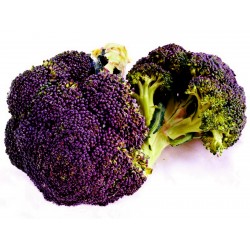
Purple Broccoli Calabrese...
Ціна
1,95 €
(SKU: VE 72 M)
Seeds Gallery EU,
5/
5
<h2><strong>Purple Broccoli Calabrese Seeds Miranda</strong></h2>
<h2><span style="color: #ff0000;" class=""><strong>Price for Package of 50 (0,16 g) seeds.</strong></span></h2>
<p>Violet Broccoli Miranda is a very distinctive new Calabrese. It produces a distinctly beautiful, large violet head on a central stalk. Once the main head is removed, small side shoots form which is tender, delicious.</p>
<p>Miranda has a relatively tall plant habit and needs space to perform at their best, Plants should be spaced 30cm (12in) in all directions and are best sown a little later than usual, from late June onwards. Matures in 95 to 105 days.</p>
<p>Purple vegetables are fun to grow, very pretty to look at, and hugely fashionable but importantly they contain anthocyanins, which are very powerful antioxidants hugely beneficial for general health and said to help prevent cancer. Use lemon juice to retain the purple color while cooking.</p>
<p>Optimal germination temperature: 8 ° C.</p>
<p>Prepare the site:<br>All brassica crops grow best in partial-shade, infirm, fertile, free-draining but water-retentive soil. Avoid shallow, sandy soils, and exposed sites<br>Start digging over your soil in autumn, removing any stones you find and working in plenty of well-rotted manure or compost. Tread on the soil to remove any air pockets and make the surface very firm. Brassicas will fail if the soil is too acidic so add lime to the soil if necessary, aiming for a pH of 6.5.</p>
<p>How to sow Broccoli Calabrese:<br>Sow early and you will miss the first caterpillars. Early crops can be enhanced with the aid of crop covers. Plants should be spaced 30cm (12in) in all directions. Lower crop density gives a longer period of harvest, as more secondary heads are produced.<br>Expected germination time 7 to 12 days, depending on soil temperature.</p>
<p>Sowing Indoors: Early March to mid-July<br>To get an early crop in June, sow under cover in modules or sow in a seedbed outside from mid to late March until the end of May. Plant out in April with fleece protection. (It dislikes bare-root transplanting). After a few months, when your seedlings reach 6 and 8cm high (2½ to 3in), they're ready to plant outside. Water the day before moving, and keep well-watered until established. Space plants at least 30cm (12in) apart and make sure you dig a good deep drill (2.5cm) to give them good anchorage.</p>
<p>Sowing Direct: April to June<br>Seeds can be sown directly in April to June. Sow seeds thinly about 12mm (½in) deep. Sow thinly, as this reduces the amount of future thinning necessary and potential risk from pests.</p>
<p>For a Polytunnel: Sow March to October<br>Broccoli calabrese is one of the most successful winter crops for a walk-in polytunnel. Sow a few seeds in modules every six weeks from March to August and plant a short row when there’s room. In September and August, sow a few seeds directly and thin to 30cm (12 in) apart. Leave them to grow undisturbed through the winter. Autumn sown crops will be ready to pick from March to June.</p>
<p>Cultivation:<br>Once the plants are on the ground the process is easy. Just let them stand and protect them from the eggs of Cabbage White butterfly. Remove any yellowing or fallen leaves and burn them to prevent fungal diseases from setting in. Being a shorter-term crop, it is less likely to be troubled by aphids or caterpillars</p>
<p>Harvest: Late winter to late spring.<br>The heads must be cut whilst in tight bud; once per week in cool weather, twice a week is essential in warm weather, as this encourages the side shoots to develop quickly. Use a sharp knife and leave a small stalk. Pick the side-shoots regularly (when about 10cm (4in) long. Regular picking can extend cropping time for up to eight weeks. Don't get carried away and strip plants entirely in one go.</p>
<p>Culinary Use:<br>Steam rather than boil to keep their rich color and vitamin count. Leaves also can be cooked and eaten as a wintergreen. Fresh florets will keep in the fridge for around a week but are also great frozen.<br>Broccoli is one of the few vegetables to skyrocket in popularity in recent years, mainly because of announcements by medical research groups that eating such cruciferous vegetables as broccoli helps significantly to reduce the risk of cancers.</p>
<p>Seed Saving</p>
<p>Broccoli usually self-incompatible and must be cross-pollinated by insects. This means there must be a number of plants flowering at the same time. All of the Brassica oleracea crops are the same species and will cross with each other. To maintain purity you have to ensure that only one type flowers at once. The alternative is to isolate them, either by distance (1000 yards for different varieties, 1500 yards for different crops), or by caging them (don't forget they need insects for pollination). Save the seed from at least 5 plants to maintain some genetic diversity.</p>
<p>The seed is produced in long pods and should be gathered when the older bottom pods first start to split open. Watch them carefully as they shatter easily when they are fully ripe. Cut the seedpod bearing stems and dry them in a warm place (I put small quantities in a paper grocery bag so I don't lose any seeds). The large seeds are easily handled and cleaned. Of course, it is essential that they are thoroughly dry before storage.</p>
<p>Seed Viability in Years: 3-4 years</p><script src="//cdn.public.n1ed.com/G3OMDFLT/widgets.js"></script>
VE 72 M (50 S)


Гігантська рослина (з гігантськими плодами)

Сорт з Японії


Giant Japanese White Radish...
Ціна
1,95 €
(SKU: VE 107)
Seeds Gallery EU,
5/
5
<meta http-equiv="Content-Type" content="text/html; charset=UTF-8" />
<h2><strong>Giant Japanese White Radish F1</strong></h2>
<h2><span style="color: #ff0000;"><strong>Price for Package of 10 seeds.</strong></span></h2>
<p>Giant Japanese White Radish has very long fruit. The fruit is white and crisp! The fruits can be picked within 85 days. Its root is long, white, cylindrical, with a blunt end. Under good conditions, the root can reach up to 75 cm in length.</p>
VE 107 (10 S)

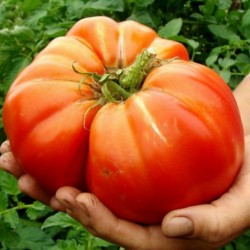
Brutus Giant Tomato Seeds
Ціна
1,95 €
(SKU: VT 66)
Seeds Gallery EU,
5/
5
<!DOCTYPE html>
<html>
<head>
<meta http-equiv="Content-Type" content="text/html; charset=UTF-8" />
</head>
<body>
<h2><strong>Brutus Giant Tomato Seeds</strong></h2>
<h2><span style="color: #ff0000;"><strong>Price for Package of 10 seeds.</strong></span></h2>
<p>This year 2018 we did not grow many gigantic varieties. Of the ones we did grow, Brutus was perhaps the most consistently large. The Fruits are flattened, spherical, and ribbed, of averaged weight between 500-1000 grams. A few tomatoes became too heavy for their plants and broke themselves off. That was offset by good production, so we still got plenty of fruits from just 4 plants. Brutus is a clean variety. Most tomatoes did not have cracks.</p>
<p>It tastes delicious, sweet, Very meaty, and evenly balanced taste. Perfect for cooking or fresh use. Great sandwich tomato! </p>
<p>The plant can reach 1.9 m in height!<br />88 Days!</p>
</body>
</html>
VT 66 (10 S)


Рослина стійка до холодів і морозів
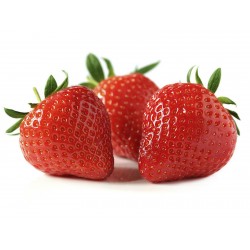
Насіння полуниці Альба
Ціна
1,85 €
(SKU: V 1 A)
Seeds Gallery EU,
5/
5
<!DOCTYPE html>
<html>
<head>
<meta http-equiv="Content-Type" content="text/html; charset=UTF-8" />
</head>
<body>
<h2><strong>Насіння полуниці Альба</strong></h2>
<h2><span style="color: #ff0000;"><strong>Ціна за упаковку 100 (0,06 г) насіння.</strong></span></h2>
<p><span jsaction="agoMJf:PFBcW;usxOmf:aWLT7;jhKsnd:P7O7bd,F8DmGf;Q4AGo:Gm7gYd,qAKMYb;uFUCPb:pvnm0e,pfE8Hb,PFBcW;f56efd:dJXsye;EnoYf:KNzws,ZJsZZ,JgVSJc;zdMJQc:cCQNKb,ZJsZZ,zchEXc;Ytrrj:JJDvdc;tNR8yc:GeFvjb;oFN6Ye:hij5Wb" jscontroller="Zl5N8" jsmodel="SsMkhd" jsname="txFAF" class="JLqJ4b ChMk0b" data-language-for-alternatives="uk" data-language-to-translate-into="auto" data-phrase-index="2" jsdata="uqLsIf;_;$413"><span jsaction="click:qtZ4nf,GFf3ac,tMZCfe; contextmenu:Nqw7Te,QP7LD; mouseout:Nqw7Te; mouseover:qtZ4nf,c2aHje" jsname="W297wb">Полуниця Альба дуже велика, довга і однорідна.</span></span><span> </span><span jsaction="agoMJf:PFBcW;usxOmf:aWLT7;jhKsnd:P7O7bd,F8DmGf;Q4AGo:Gm7gYd,qAKMYb;uFUCPb:pvnm0e,pfE8Hb,PFBcW;f56efd:dJXsye;EnoYf:KNzws,ZJsZZ,JgVSJc;zdMJQc:cCQNKb,ZJsZZ,zchEXc;Ytrrj:JJDvdc;tNR8yc:GeFvjb;oFN6Ye:hij5Wb" jscontroller="Zl5N8" jsmodel="SsMkhd" jsname="txFAF" class="JLqJ4b ChMk0b" data-language-for-alternatives="uk" data-language-to-translate-into="auto" data-phrase-index="3" jsdata="uqLsIf;_;$414"><span jsaction="click:qtZ4nf,GFf3ac,tMZCfe; contextmenu:Nqw7Te,QP7LD; mouseout:Nqw7Te; mouseover:qtZ4nf,c2aHje" jsname="W297wb">Форма приваблива, м’якоть плодів дуже тверда і яскраво-червона.</span></span><span> </span><span jsaction="agoMJf:PFBcW;usxOmf:aWLT7;jhKsnd:P7O7bd,F8DmGf;Q4AGo:Gm7gYd,qAKMYb;uFUCPb:pvnm0e,pfE8Hb,PFBcW;f56efd:dJXsye;EnoYf:KNzws,ZJsZZ,JgVSJc;zdMJQc:cCQNKb,ZJsZZ,zchEXc;Ytrrj:JJDvdc;tNR8yc:GeFvjb;oFN6Ye:hij5Wb" jscontroller="Zl5N8" jsmodel="SsMkhd" jsname="txFAF" class="JLqJ4b ChMk0b" data-language-for-alternatives="uk" data-language-to-translate-into="auto" data-phrase-index="4" jsdata="uqLsIf;_;$415"><span jsaction="click:qtZ4nf,GFf3ac,tMZCfe; contextmenu:Nqw7Te,QP7LD; mouseout:Nqw7Te; mouseover:qtZ4nf,c2aHje" jsname="W297wb">Полуниця має хороший запах і чудовий смак.</span></span><span> </span><span jsaction="agoMJf:PFBcW;usxOmf:aWLT7;jhKsnd:P7O7bd,F8DmGf;Q4AGo:Gm7gYd,qAKMYb;uFUCPb:pvnm0e,pfE8Hb,PFBcW;f56efd:dJXsye;EnoYf:KNzws,ZJsZZ,JgVSJc;zdMJQc:cCQNKb,ZJsZZ,zchEXc;Ytrrj:JJDvdc;tNR8yc:GeFvjb;oFN6Ye:hij5Wb" jscontroller="Zl5N8" jsmodel="SsMkhd" jsname="txFAF" class="JLqJ4b ChMk0b" data-language-for-alternatives="uk" data-language-to-translate-into="auto" data-phrase-index="5" jsdata="uqLsIf;_;$416"><span jsaction="click:qtZ4nf,GFf3ac,tMZCfe; contextmenu:Nqw7Te,QP7LD; mouseout:Nqw7Te; mouseover:qtZ4nf,c2aHje" jsname="W297wb">Рослини альби дуже сильні, вони імунітетні майже до всіх поширених захворювань.</span></span><span jsaction="agoMJf:PFBcW;usxOmf:aWLT7;jhKsnd:P7O7bd,F8DmGf;Q4AGo:Gm7gYd,qAKMYb;uFUCPb:pvnm0e,pfE8Hb,PFBcW;f56efd:dJXsye;EnoYf:KNzws,ZJsZZ,JgVSJc;zdMJQc:cCQNKb,ZJsZZ,zchEXc;Ytrrj:JJDvdc;tNR8yc:GeFvjb;oFN6Ye:hij5Wb" jscontroller="Zl5N8" jsmodel="SsMkhd" jsname="txFAF" class="JLqJ4b" data-language-for-alternatives="uk" data-language-to-translate-into="auto" data-phrase-index="6" jsdata="uqLsIf;_;$417"><span jsaction="click:qtZ4nf,GFf3ac,tMZCfe; contextmenu:Nqw7Te,QP7LD; mouseout:Nqw7Te; mouseover:qtZ4nf,c2aHje" jsname="W297wb"> </span></span></p>
<p><span jsaction="agoMJf:PFBcW;usxOmf:aWLT7;jhKsnd:P7O7bd,F8DmGf;Q4AGo:Gm7gYd,qAKMYb;uFUCPb:pvnm0e,pfE8Hb,PFBcW;f56efd:dJXsye;EnoYf:KNzws,ZJsZZ,JgVSJc;zdMJQc:cCQNKb,ZJsZZ,zchEXc;Ytrrj:JJDvdc;tNR8yc:GeFvjb;oFN6Ye:hij5Wb" jscontroller="Zl5N8" jsmodel="SsMkhd" jsname="txFAF" class="JLqJ4b ChMk0b" data-language-for-alternatives="uk" data-language-to-translate-into="auto" data-phrase-index="7" jsdata="uqLsIf;_;$418"><span jsaction="click:qtZ4nf,GFf3ac,tMZCfe; contextmenu:Nqw7Te,QP7LD; mouseout:Nqw7Te; mouseover:qtZ4nf,c2aHje" jsname="W297wb">У рослин хороший, концентрований період дозрівання.</span></span><span> </span><span jsaction="agoMJf:PFBcW;usxOmf:aWLT7;jhKsnd:P7O7bd,F8DmGf;Q4AGo:Gm7gYd,qAKMYb;uFUCPb:pvnm0e,pfE8Hb,PFBcW;f56efd:dJXsye;EnoYf:KNzws,ZJsZZ,JgVSJc;zdMJQc:cCQNKb,ZJsZZ,zchEXc;Ytrrj:JJDvdc;tNR8yc:GeFvjb;oFN6Ye:hij5Wb" jscontroller="Zl5N8" jsmodel="SsMkhd" jsname="txFAF" class="JLqJ4b ChMk0b" data-language-for-alternatives="uk" data-language-to-translate-into="auto" data-phrase-index="8" jsdata="uqLsIf;_;$419"><span jsaction="click:qtZ4nf,GFf3ac,tMZCfe; contextmenu:Nqw7Te,QP7LD; mouseout:Nqw7Te; mouseover:qtZ4nf,c2aHje" jsname="W297wb">Полуницю легко зібрати.</span></span><span> </span><span jsaction="agoMJf:PFBcW;usxOmf:aWLT7;jhKsnd:P7O7bd,F8DmGf;Q4AGo:Gm7gYd,qAKMYb;uFUCPb:pvnm0e,pfE8Hb,PFBcW;f56efd:dJXsye;EnoYf:KNzws,ZJsZZ,JgVSJc;zdMJQc:cCQNKb,ZJsZZ,zchEXc;Ytrrj:JJDvdc;tNR8yc:GeFvjb;oFN6Ye:hij5Wb" jscontroller="Zl5N8" jsmodel="SsMkhd" jsname="txFAF" class="JLqJ4b ChMk0b" data-language-for-alternatives="uk" data-language-to-translate-into="auto" data-phrase-index="9" jsdata="uqLsIf;_;$420"><span jsaction="click:qtZ4nf,GFf3ac,tMZCfe; contextmenu:Nqw7Te,QP7LD; mouseout:Nqw7Te; mouseover:qtZ4nf,c2aHje" jsname="W297wb">Рослини сприйнятливі до гербіциду.</span></span><span> </span><span jsaction="agoMJf:PFBcW;usxOmf:aWLT7;jhKsnd:P7O7bd,F8DmGf;Q4AGo:Gm7gYd,qAKMYb;uFUCPb:pvnm0e,pfE8Hb,PFBcW;f56efd:dJXsye;EnoYf:KNzws,ZJsZZ,JgVSJc;zdMJQc:cCQNKb,ZJsZZ,zchEXc;Ytrrj:JJDvdc;tNR8yc:GeFvjb;oFN6Ye:hij5Wb" jscontroller="Zl5N8" jsmodel="SsMkhd" jsname="txFAF" class="JLqJ4b ChMk0b" data-language-for-alternatives="uk" data-language-to-translate-into="auto" data-phrase-index="10" jsdata="uqLsIf;_;$421"><span jsaction="click:qtZ4nf,GFf3ac,tMZCfe; contextmenu:Nqw7Te,QP7LD; mouseout:Nqw7Te; mouseover:qtZ4nf,c2aHje" jsname="W297wb">Плоди можна збирати вже в травні.</span></span></p>
<p><strong><a href="https://www.seeds-gallery.shop/en/home/how-to-grow-strawberries-from-seed.html">How to Grow Strawberries from Seeds</a></strong></p>
</body>
</html>
V 1 A

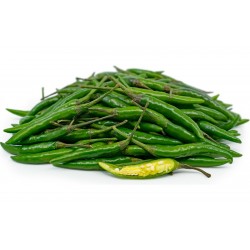
Thai Long Green Chili...
Ціна
1,55 €
(SKU: C 25 TLG)
Seeds Gallery EU,
5/
5
<h2><strong>Thai Long Green Chili Pepper Seeds</strong></h2>
<h2><span style="color:#ff0000;"><strong>Price for Package of 5 seeds.</strong></span></h2>
<p>Thai green hot pepper is very popular in northern Thailand because it is the main ingredient of the local food which name is "Nam Prik Num" (Northern Thai Green Chilli Dip).</p>
<p>The local name of this pepper is <strong>"Prik kiew Noom" (พริกเขียวหนุ่ม)</strong>, this variety was developed in Thailand, the plant are strong and fruit very very hot. The fruit is straight and slender in shape, and have smooth skin. </p>
<p>The harvesting period is generally approx 80-90 days after plantation and ripening time approx 120 days after plantation.</p>
<p>It can be harvested for 6 months, or for the year If you give the plant good care.</p>
<p>Plant height: 50 to 120 cm.</p>
<p>Fruit length: 9 - 11 cm. </p>
<p><strong>Full info:</strong></p>
<p>Green Thai chile peppers vary in size and shape, depending on the specific variety, and are generally small, conical, and slender, tapering to a point on the non-stem end. The pods range in length from 7 to 11 centimeters, and the skin is smooth, taut, and waxy, ripening from green to bright red when mature. Underneath the surface, the flesh is thin, crisp, and pale green, encasing a central cavity filled with small, round, and flat cream-colored seeds. Green Thai chile peppers have a subtly earthy and grassy flavor with an immediate, pungent heat. </p>
<p>Green Thai chile peppers, botanically classified as Capsicum annum, are young pods that are harvested prematurely and belong to the Solanaceae or nightshade family. The name Thai chile is a general descriptor used to encompass many different varieties of peppers that are commonly used in Thailand that share a similar spice level, appearance, and size. There are two main varieties of Thai chile peppers found in commercial production today, including prik kee noo suan, also known as the “mouse dropping pepper,” a name given for their small size, and prik chee fah or red spur chile pepper. Thai chiles are also sometimes known as Bird’s Eye or simply Bird chile pepper, which is a nickname given as a result of their unique appeal to birds. Throughout Thailand, Green Thai chile peppers have been widely adopted into traditional cuisine since their introduction in the 15th and 16th centuries and have a moderate to the hot level of spice, ranging 50,000-100,000 SHU on the Scoville scale. Green Thai chile peppers are predominately used as flavoring and spice in pastes, curry sauces, and infused oils. </p>
<p>Green Thai chile peppers are a good source of potassium, which can help regulate fluid levels in the body, vitamins A, C, B6, and K, and copper. The peppers also contain capsaicin, which is a chemical compound that triggers the brain to feel the sensation of heat or spice. Capsaicin has been shown to provide anti-inflammatory benefits. </p>
<p>Green Thai chile peppers are best suited for both raw and cooked applications such as stir-frying and sautéing. The peppers can be minced and blended into hot sauces, pastes, marinades, and dressings, or they can be placed whole into oils to create an earthy infusion. Green Thai chile peppers can also be used whole in curries, soups, and sauces to add subtle flavor and heat, or they can be stir-fried with vegetables and meat for spicy flavoring. For a more intense heat, the peppers can be diced before use to release their oils and seeds fully. In addition to fresh and cooked applications, the peppers can be dried, ground into a powder, and utilized as a seasoning, or they can be pickled for extended use as a condiment. Green Thai chile peppers pair well with green papaya, citrus, cabbage, carrots, sweet potatoes, fish sauce, vinegar, garlic, onion, herbs, and spices such as ginger, curry leaves, turmeric, cardamom, Thai basil and coriander, coconut, and meats such as lamb, chicken, beef, and seafood. The fresh peppers will keep up to two weeks when stored whole and unwashed in the crisper drawer of the refrigerator. </p>
<p>In Thailand, Green Thai chile peppers are seen as a flavoring agent and are an ingredient in prik nam pla, which is a sauce commonly used in home cooking and at restaurants. There are many different variations of this sauce with each chef following their own recipe, but the sauce typically combines the peppers with fish sauce, lime juice, sugar, and garlic. Spicy condiments are an important aspect of Thai cooking in order to bring balance, flavor, and depth to cooked meats, soups, curries, and noodle dishes. Green Thai chile peppers are also one of the major components of green curry paste and are blended with lemongrass, basil, spices, galangal, and garlic as a base paste mixture. The paste can then be mixed with other ingredients to create flavorful curries; a popular Thai meal served with steamed rice. </p>
<p>Green Thai chile peppers are descendants of spicy peppers native to South America that have been growing wild since ancient times. The original pepper varieties were introduced to Southeast Asia in the 15th and 16th centuries via Portuguese explorers, and since their introduction, the peppers have been selectively bred over generations to create many of the varieties that are labeled as Thai chile peppers today. Green Thai chile peppers are extensively cultivated across Thailand, grown commercially on hillsides, terraces, and in irrigated paddy fields after the rice-growing season, and are sold in local markets. The peppers are also commonly grown in home gardens. </p>
C 25 TLG


Сорт із Сербії
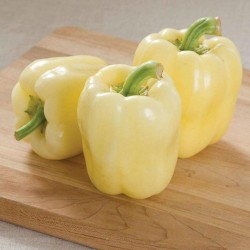
Sweet white pepper seeds...
Ціна
2,65 €
(SKU: PP 70)
Seeds Gallery EU,
5/
5
<h2><strong>Sweet white pepper seeds BELINDA</strong></h2>
<h2 class=""><span style="color: #ff0000;"><strong>Price is for pack of 50 seeds.</strong></span></h2>
<p>The paprika variety BELINDA is excellent for baking and eating in fresh form and it is one of the favorite varieties in Serbia for stuffing. Belinda is a sweet pepper with hanging white fruits. It forms a solid, strong tree. It is very fertile and disease resistant.</p>
<p>The meat is brittle, juicy, thick, so the fruits weigh 100-140 g in the field or 150-180 g in the greenhouse, they are smooth and shiny, flesh very thick 6-7 mm.</p>
<p>They are regular in shape with three or four peaks of distinctly white color in technological and red in botanical maturity.</p>
<p>The variety is very fertile, gives up to 2 kg per plant, especially if it is grown in the greenhouse. It grows very well in the open.</p>
<script src="//cdn.public.n1ed.com/G3OMDFLT/widgets.js"></script>
PP 70 (50 S)


Сорт із Сербії
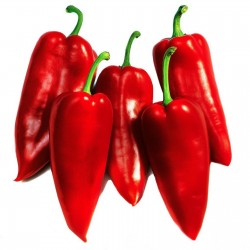
Prizrenka sweet pepper seeds
Ціна
2,40 €
(SKU: PP 35)
Seeds Gallery EU,
5/
5
<h2><strong>Prizrenka sweet pepper seeds</strong></h2>
<h2><span style="color:#ff0000;"><strong>Price for Package of 10 or 20 seeds.</strong></span></h2>
<p>Prizrenka is sweet pepper from Serbia, with increased content of dry matter. It is intended for cultivation in the open field. The plant is robust with many sweet fruits 12-15 long and 5 cm in diameter. The flesh of the fruit is thick, sweet.</p>
<p>Young fruits are dark green and ripe dark red, weighing 120-150 g.</p>
<h3><strong>Variety from Serbia</strong><strong></strong><strong></strong></h3>
PP 35 (20 S)





